While many first-time travelers to the Greek Islands will only choose to visit the heavy hitters of Mykonos and Santorini, the less-visited island of Crete is an ideal spot for a more relaxing and affordable visit to Greece. Your seven-day Crete itinerary will be filled with visits to sandy beaches, crystal blue waters, and picture-perfect towns flanked by white mountains and rolling hills of olive groves. Greece’s largest island is sure not to disappoint.
Crete is located to the south of the Greek mainland and the Cyclades Islands (which includes the islands of Mykonos, Santorini, Paros, Naxos, Milos, etc). Perched in the middle of the Eastern Mediterranean between the Sea of Crete to the north and the Libyan Sea of the Mediterranean to the south, the island has not only served as a strategic location for various empires to set up trade and military outposts, but it has also served as the lifeblood of ancient civilizations such as the Minoans.
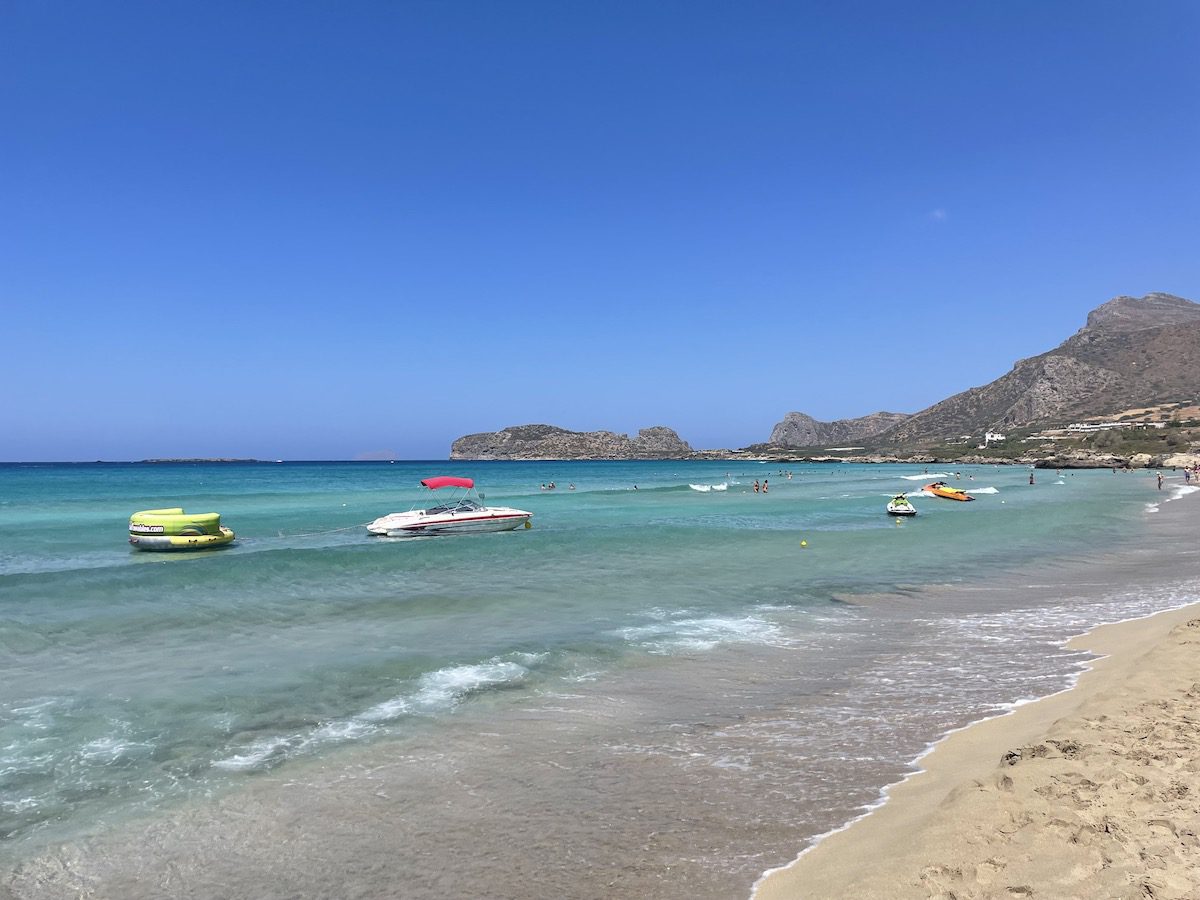
Why Visit Crete?
Thanks to all of this history, Crete is home to some of Greece’s best historical and archaeological sites, as well as breathtaking landscapes.
Given the island’s size and population, Crete has been able to maintain a traditional Greek (though also uniquely Cretan) atmosphere when compared with some of Greece’s smaller islands, which are now overrun with tourists. Cretan cuisine is legendary. I can honestly say that the time I spent in Crete was probably the best I have eaten on any vacation in my life.
Since Crete is so large and fertile, much of the food available in Crete is locally grown— and very cheap, not only by European standards but even by Greek standards. Cretan hospitality is notably as legendary as the cuisine and is home to some of Greece’s finest vineyards.
Crete really has it all. With its almost paradisiacal atmosphere, it is really no wonder that the island is considered by some to be the fabled birthplace of Zeus and many other Ancient Greek Gods.
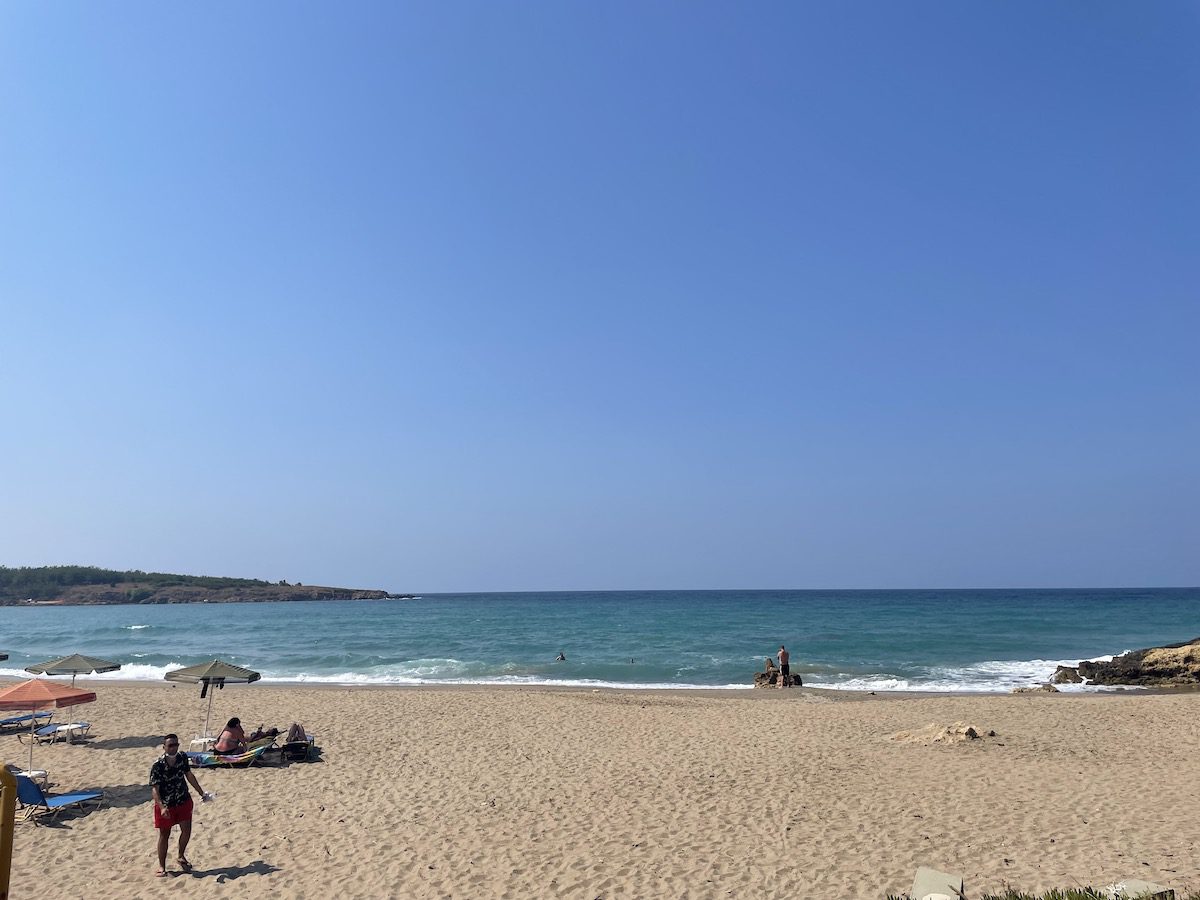
It is an ideal destination for families with children, since the beaches are beautiful, and the waters tend to be pretty calm and shallow. It is great for young people looking to party in more down-to-earth settings than glitzy Mykonos. Crete is also ideal for solo travel or for couples looking for a romantic getaway.
7 Day Crete Itinerary
Spending a week in Crete would give first-time visitors a chance to really experience what the island has to offer. For a week in Crete, arrive in Heraklion via plane or ferry. Spend two days in Heraklion and its surrounding attractions like the Ancient Minoan Palace of Knossos before moving on to the Venetian Port city of Rethymno.
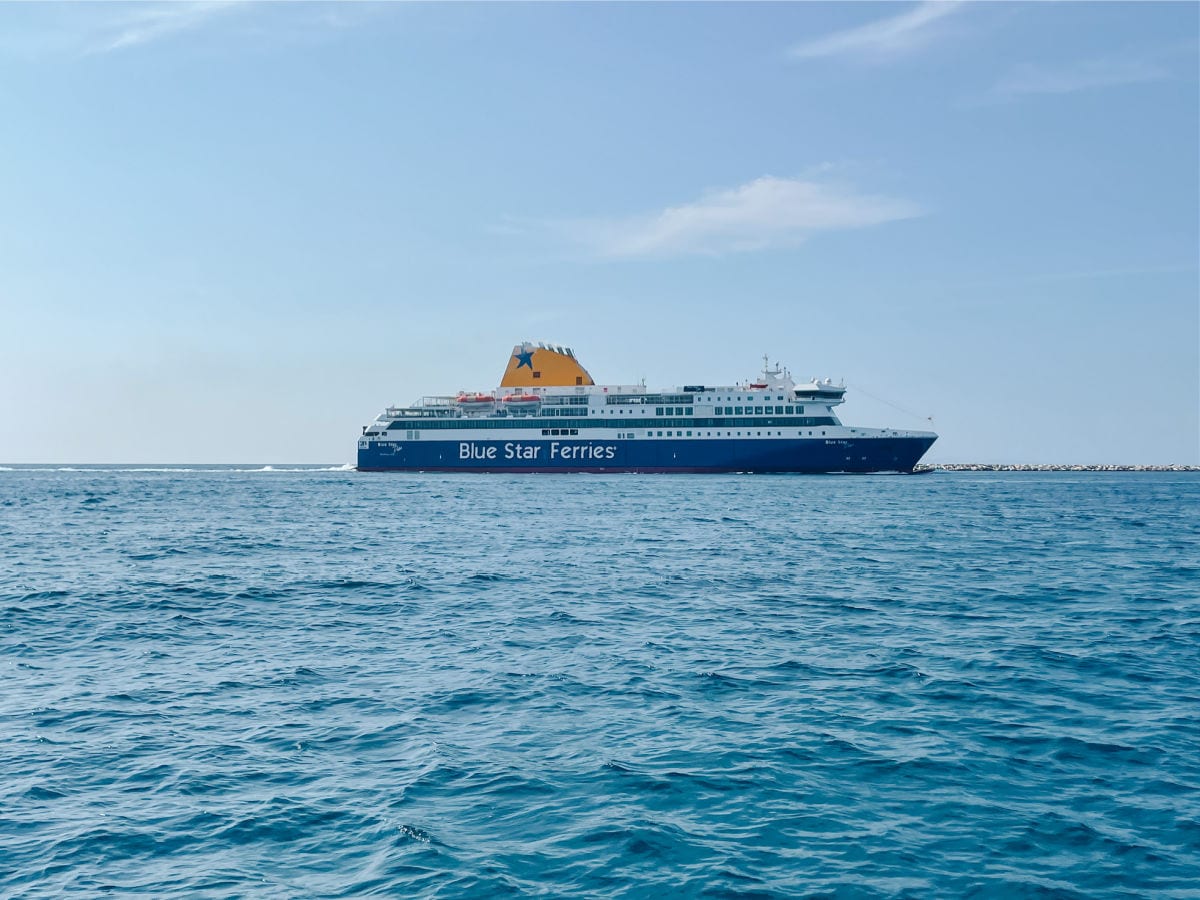
You can then spend one to two days in Rethymno and its surroundings before traveling west to Chania and the beaches and nature of the west of Crete, where you should spend three to four days at a minimum. One day in either Chania or Rethymno should be swapped for cultural activities like a vineyard tour, a cooking class, or a combination of more than one.
If you have one week in Crete, follow this 7 day Crete itinerary to see the island’s highlights.
Day 1: Heraklion

Start your visit to Crete in Heraklion. Although Heraklion may not be the most beautiful city on the island, it is well-connected to the rest of Crete, Greece, and Europe, and it is home to some of the island’s key archaeological and historical sites.
Begin your time in Heraklion by visiting the Archaeological Museum. The Archaeological Museum is one of Greece’s best and most important historical sites. The museum contains an exquisite array of artifacts and is particularly famous for its pieces from the Minoan civilization,, offering an excellent introduction to Crete’s lengthy history.
Get to the museum early, as the lines can get exceptionally long in the afternoon, especially during peak season. Another perk of going to the museum early is that you can purchase a combined ticket for the museum and the Palace of Knossos from the Archaeological Museum’s ticket office.
Block out a good chunk of time to spend at the museum during your time in Heraklion. Even if you are not a museum lover you will want to spend no less than an hour browsing. I think I spent about two hours at the museum, though I easily could have stayed longer.
Depending on how long you spend in the museum, you may already be hungry for lunch by the time you finish looking. Walk from the museum to the Venetian Harbor to enjoy a lunch of freshly caught seafood with a view of boats floating on the Aegean Sea and a nice sea breeze at one of the many harborside restaurants.
Try Peskesi, away from the waterfront, for delicious plates of locally sourced, farm-fresh Cretan classics like fried, stuffed zucchini blossoms or goat cooked in yogurt. Peskesi offers one of the best culinary experiences in Heraklion.
After lunch, take some time to wander the narrow streets of Heraklion’s Old Town. Though not as pretty as Chania or Rethymno, Heraklion does still have a nice ambiance. There is plenty of shopping to be done, a green park in the center, and some beautiful old buildings and churches from the Venetian and Ottoman eras in Crete. These include the Janissary Fountain (near to the Archaeological Museum), the Venetian Loggia, the Venetian Dockyards, the Church of Agios Titos, and the Basilica of Saint Mark, which now houses an art gallery.
If you only have a day in Heraklion, make your way to the Knossos Archaeological Site either by taxi from the taxi stand just in front of the Heraklion Archaeological Museum or by bus, the bus route for which is also accessible in Eleftherias Square just outside of the museum. It should not take more than 30 minutes to reach the palace by bus, and a taxi ride would be even shorter if you are truly pressed for time at this point in your day.
If you already have your ticket for Knossos Palace from the Archaeological Museum, you can just walk right up to the entrance— otherwise, you will need to purchase a ticket at the ticket kiosk nearby. Knossos Palace is a stunning site of the ancient Minoan civilization. Its sheer age is enough to amaze, as is its scale.
If you are only spending a day in Heraklion, you may need to leave to catch your ferry, flight, or bus after visiting Knossos. If not, though, return to Heraklion for dinner.
Day 2: Heraklion
If you have a second day in Heraklion, I recommend simply spreading out some of the sightseeing from the one-day itinerary I have suggested into your second day.
You could also make this second day into a day trip to Rethymno from Heraklion or make your second day a relaxing day by the sea by traveling from Heraklion to Agios Nikolaos, or to Plaka or Elounda, and then to Spinalonga Island— once a leper colony, but now a relaxation destination— via a short boat trip. You can rent cars from the Heraklion Airport or take public buses from the bus station down the hill from Eleftherias Square, next to the ferry port.
Day 3: Rethymno
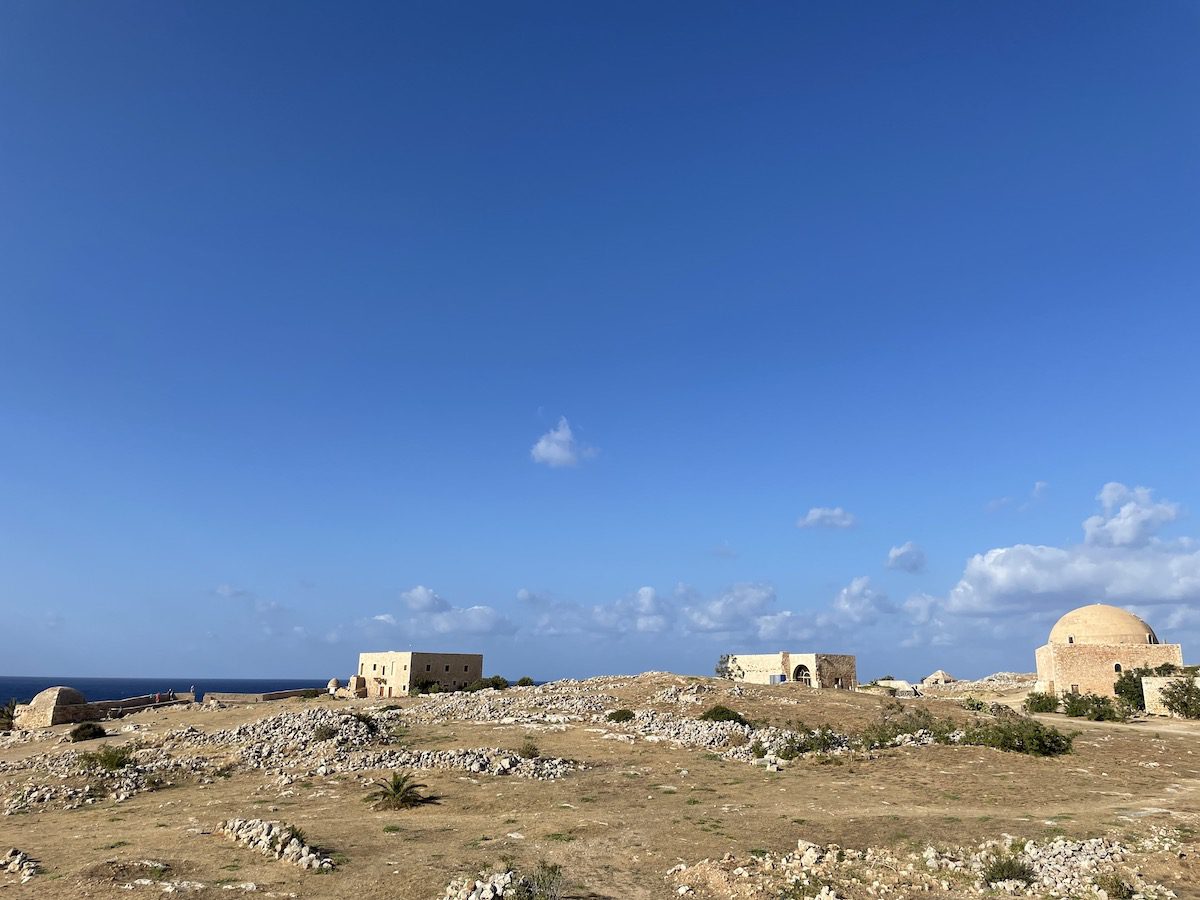
Rethymno’s winding, narrow streets, its historical sites, and its natural beauty make the town special. Begin your visit to Rethymno by walking from wherever you have parked or the central bus station into the Old Town to wander through the charming narrow streets. Rethymno’s Old Town is small— smaller than Heraklion’s or Chania’s— but there are still plenty of nice shops, restaurants, bars, and historic sites to incorporate into your visit.
Explore Rethymno’s Venetian history by visiting the sixteenth-century Porta Guora gate and the Venetian loggia. The Venetian Rimondi Fountain of Rethymno is also worth passing by. It is located very close to Rethymno’s Archaeological Museum, as well as the Ottoman Era Neratze Mosque, which occasionally hosts concerts.
For lunch and drinks during your first day in Rethymno, try Raki Ba Raki. The restaurant is beautifully set between two of the nicest streets in Rethymno’s Old Town with ample outdoor seating, which is especially worth taking advantage of in the summertime. In addition to their delicious mezedhes (mezze) and entrees— like their outstanding braised oxtail with orzo—, they also offer a great selection of local wines. I recommend breaking up a day in Rethymno with a stop here.
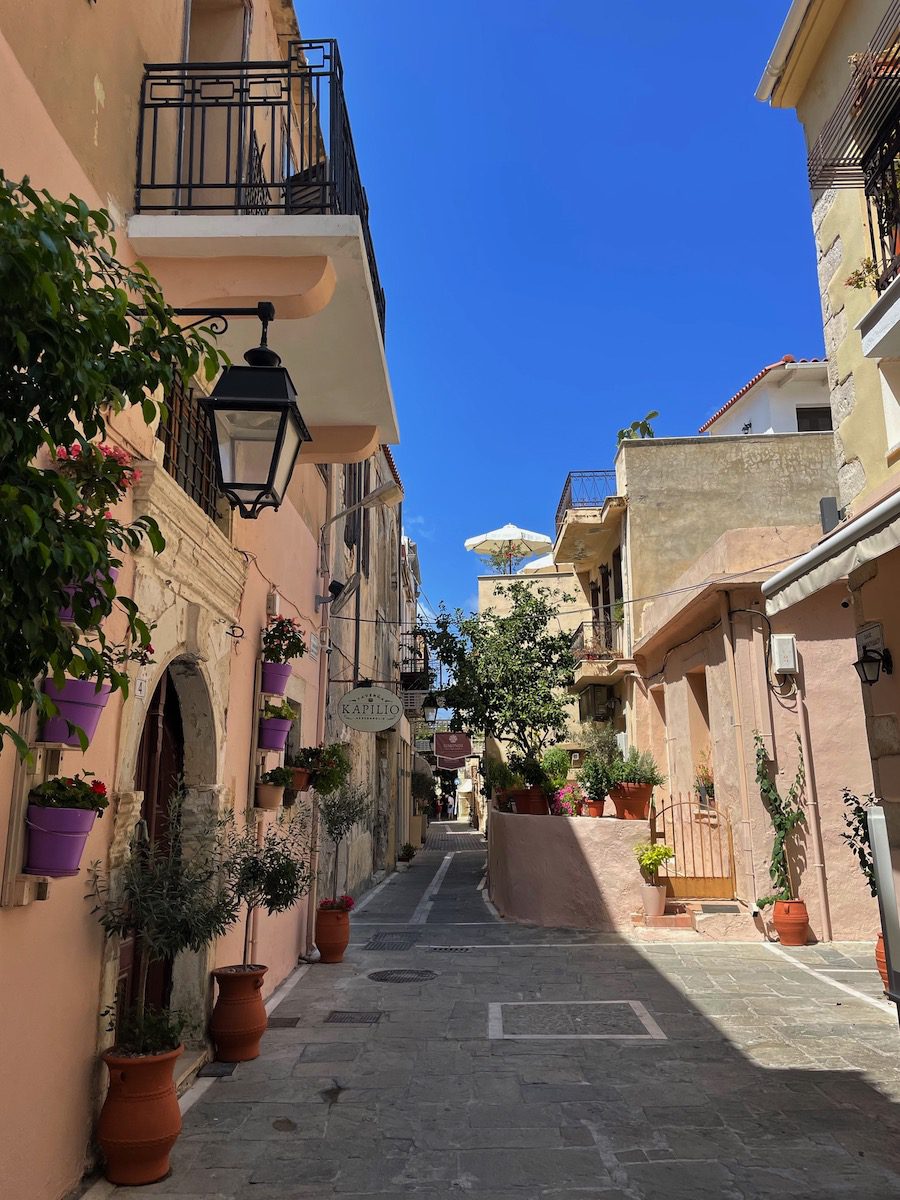
As beautiful as the sites that line Rethymno’s picturesque streets are, the town’s real gem is its Venetian harbor and lighthouse. Though smaller than Heraklion’s, Rethymno’s harbor is significantly nicer. It is a perfect place for people watching, enjoying the sun, grabbing a drink, and especially walking, as there is a nice palm tree-lined boardwalk that extends east from the harbor towards a stretch of city beach.
Try to make it to the Fortezza, Rethymno’s Fortress, in the late afternoon or early evening and you may be able to catch the sunset. Rethymno’s fortress is a fascinating amalgamation of the city’s Venetian, Ottoman, and Greek past.
A must-visit on the top of the fortress complex is the abandoned Sultan Ibrahim Khan Mosque, located in a beautiful, domed building that housed a Venetian church dedicated to Saint Nicholas prior to the Ottoman conquest of Rethymno in the Sixteenth Century. On the western flank of the fortress (outside of the fortress museum complex itself) is the tiny Chapel of Agios Spiridon, beautifully carved into the side of a cliff and decorated with stunning Greek Orthodox iconography.
Day 4: Rethymno
You can use your fourth day in Rethymno to experience the crystal blue waters of the Rethymno region’s beautiful Preveli Beach, located about a forty-five-minute drive across the island from Rethymno on the southern coast. KTEL offers a bus service from Rethymno’s Central Station directly to this beach that takes about thirty-five minutes.
The nearby Preveli Monastery, which looks out over the water, is also worth visiting. Alternatively, use this day to engage in a cultural activity, like a wine-tasting.
When I stayed in Crete, I visited the Dourakis Winery near Rethymno. A popular winery among tourists and locals alike, the Dourakis Winery is located in a picturesque part of the Cretan countryside between Chania and Rethymno. It is accessible by car or via public transportation.
Day 5: Chania
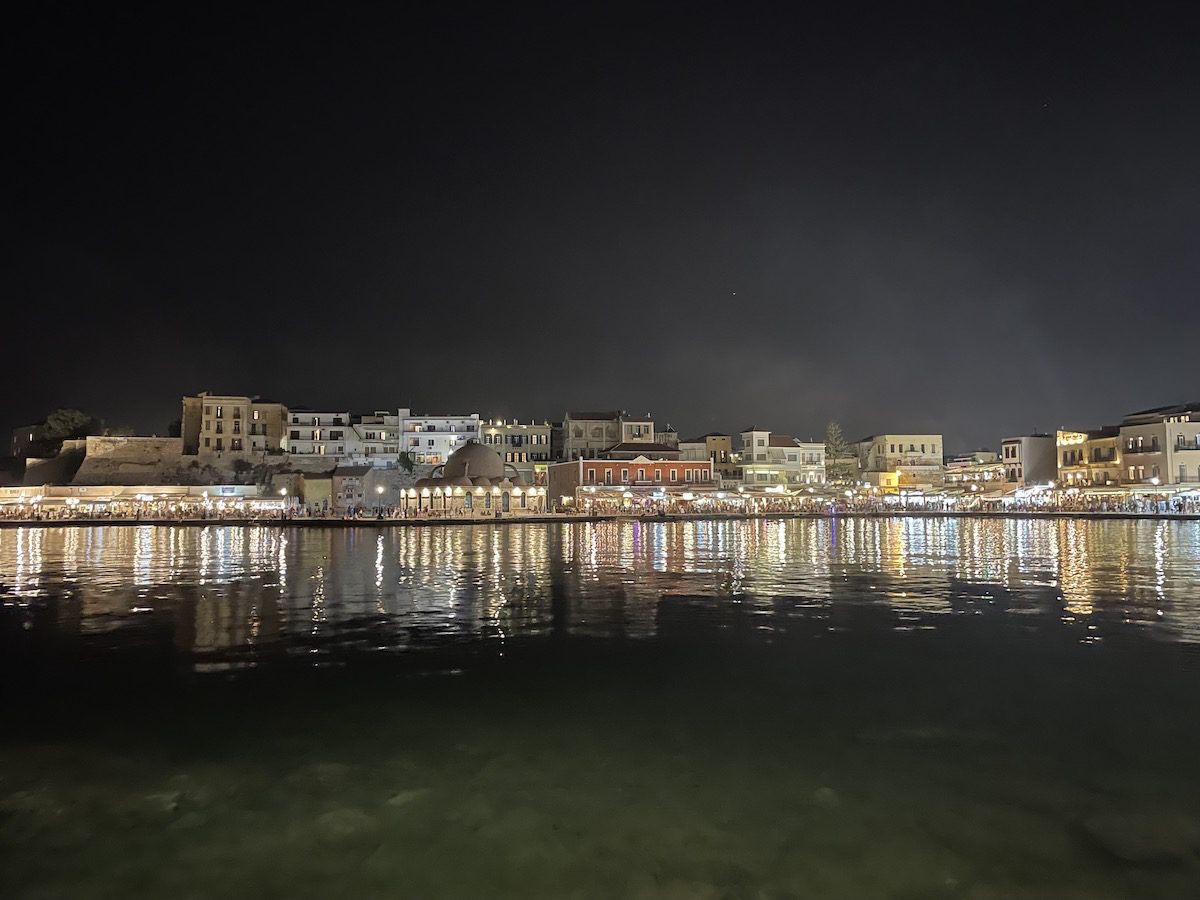
Chania, located in the western part of Crete, boasts a gorgeous Old Town, popular beaches with shallow waters, and an excellent food scene. It is also the perfect gateway to Crete’s best sandy beaches and one of the island’s most famous natural sites, the Samaria Gorge.
Chania’s Old Town is incredibly charming and is well worth at least a day of your time. Begin your first day in Chania with sightseeing in Chania’s Old Town by doing a walking tour that starts at the Old Market of Chania. This covered market dating from the 1800s is now mostly filled with shops selling souvenirs for tourists but there are still some authentic shops left that sell traditional Cretan market wares like marinated olives and fresh produce.
Leave the market through the north end and circle left and then right around the block and onto Chatzimichali Ntaliani to pass by the Ottoman-era Ahmet Ağa minaret. Flanked by shops and cafes lined with beautiful bougainvillea, the views of this minaret are emblematic of Chania. The coffee shop Monogram on this street is a wonderful place for a morning or afternoon cappuccino or latte.
Continue on to Splantzia Square to take in the views of the Greek Orthodox Church of Agios Nikolaos with its Ottoman-era minaret still standing from when the church was a mosque. After the square and the church, walk towards the water to take in the views of the Venetian Harbor and the lighthouse.
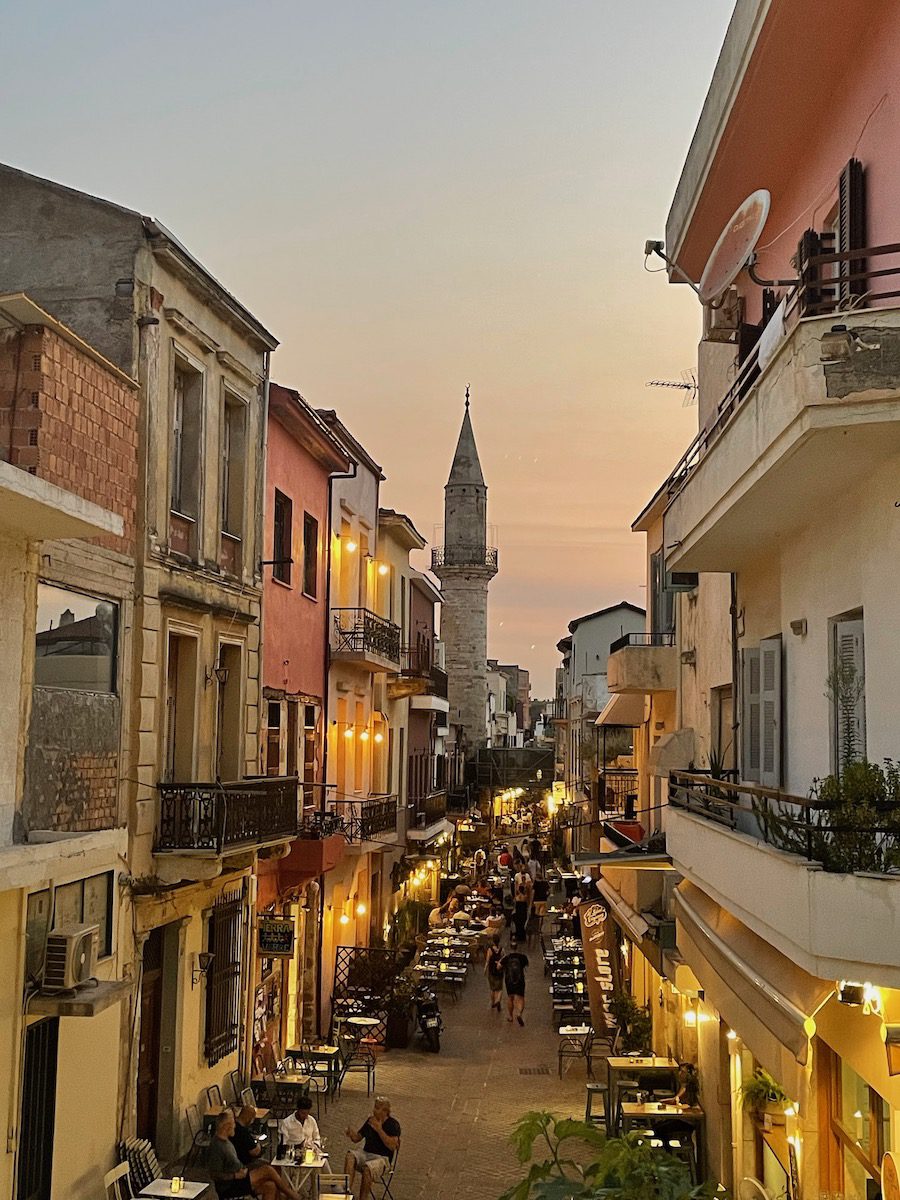
This area of Chania has a beautiful boardwalk that offers lovely views and a lively restaurant and bar culture during the day and night. The Chania Kasteli offers an excellent vantage point for views of the Venetian Harbor, particularly at dusk. Just below the Kasteli are the ruins of the city’s Byzantine walls, some excavations of the ancient Minoan site of Kydonia, and the small, pink-domed Ottoman Küçük Hasan Paşa Mosque of the Janissaries.
Keep walking along the harbor before turning left on Kondilaki, and then follow the signs for the Etz Hayyim Synagogue, once the spiritual center of one of the world’s oldest Jewish communities before its almost total destruction during the Nazi Occupation of Greece.
This should be plenty to fill a morning in Chania’s Old Town. For lunch, I highly recommend eating at Kouzina E.P.E. An inexpensive lunch-only option, the restaurant offers a la carte options in addition to specials prepared daily to be eaten in the restaurant or to be taken away. The grilled halloumi and oyster mushroom salad I ate there is to this day one of the best dishes I have ever ordered while traveling abroad. The complimentary crème caramel and tsikoudia frequently served for dessert are also delicious.
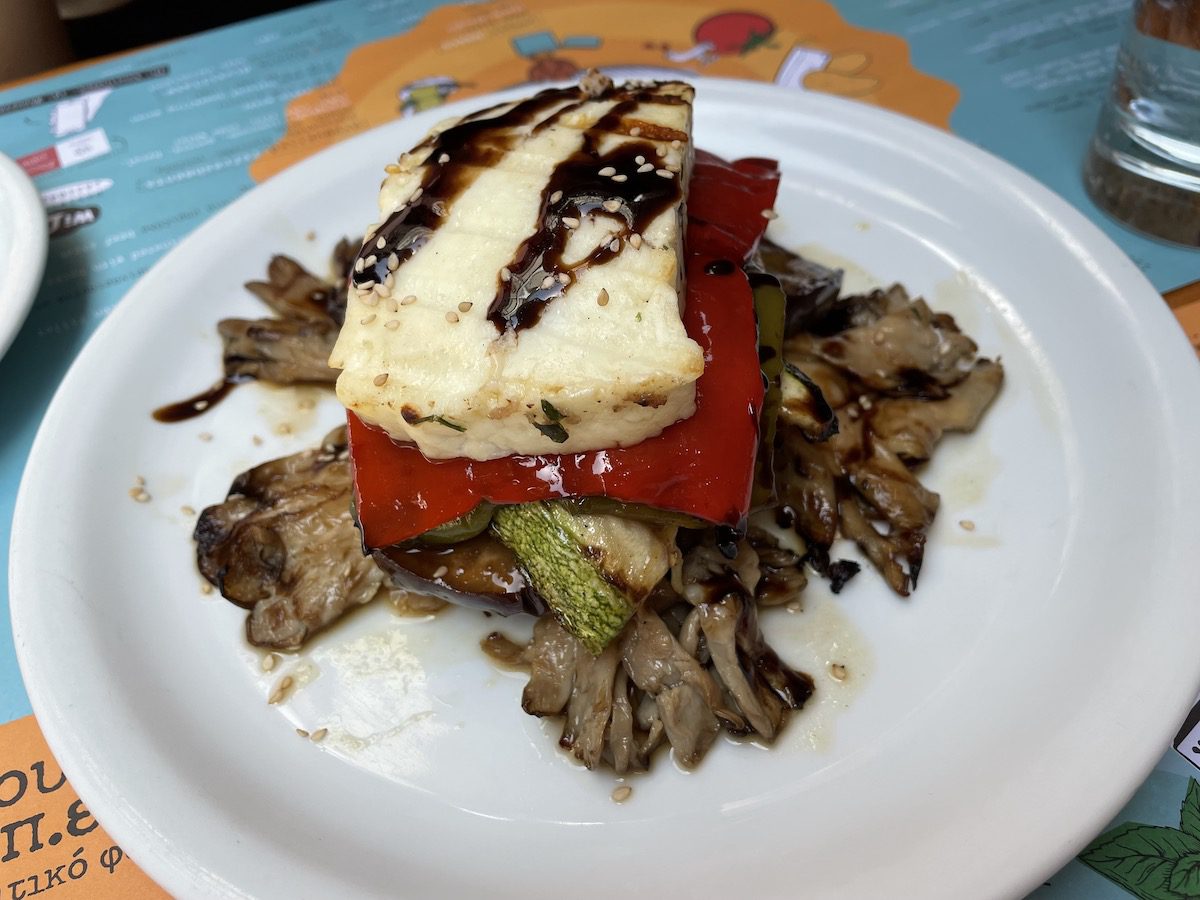
After lunch, continue exploring the center of Chania’s narrow streets. While Chania’s Old Town has its fair share of kitschy souvenir shops, there are also some lovely, understated boutique jewelry and handicraft stores. One of my favorite places to shop in Chania was at Terra Verde, which sells authentic Cretan foodstuffs including olive oil, honey, and fleur de sel.
Also worth visiting are the Presentation of the Virgin Mary Cathedral of Chania and Chania’s Roman Catholic Assumption Cathedral, as well as Chania’s museums. Although none are large, Chania’s Old Town contains a gallery with an impressive Byzantine artifact collection, the Maritime Museum of Crete, the Greek National Football Museum, and a public art gallery.
Behind the Maritime Museum and the Byzantine collection is another one of Chania’s forts. Though it is not nearly as impressive as Rethymno’s, it is worth walking by since it is at the very least located near some of Chania’s best jewelry and handicraft shopping.
Home to some of Crete’s best restaurants, eating out in Chania is one of the best parts of visiting the city. For a unique dining experience, try the Turkish-inspired To Pigadi Tou Tourkou (The Well of the Turk) or Tamam.
For more traditional Cretan or Greek dining, try Oinopoieio. Seafood lovers should try To Maridaki. Restaurants in Chania during peak travel season get crowded, so make sure to make reservations at least a day, if not a few days, in advance at some of the more popular restaurants.
This walking tour is a good way to structure a visit to Chania’s Old Town if you only will be spending a day in the area.
Day 6: Chania
On your second day in Chania, try exploring some of the local beaches, like Nea Chora Beach, Hrisi Akti Beach, Yannis Beach— my personal favorite—and Agii Apostoli Beach.
If you are feeling particularly adventurous, you can also use this day in Chania to take a day trip to one of Western Crete’s gorgeous, sandy beaches. Falasarna Beach, Balos Beach, Balos Lagoon, Gramvousa, Elafonissi Beach, Gramvousa, and Paleochora are some of the most popular options.
They are all accessible from Chania via car or by public bus, though Balos Lagoon and Gramvousa require an additional hike and/or scenic boat trip. Hiking in the Samaria Gorge is another popular activity near Chania.
Day 7: Chania
Use your final day in Chania to try a different beach, just walk around and people-watch in Chania’s Old Town, or try some more of the region’s delightful cuisine. You can incorporate another cultural activity on this last day by signing up for a cooking class. I was lucky to have found a review on the Airbnb I rented in Chania that said that the owner of my Airbnb, Arietta Stamatakis, offered cooking classes.
I highly recommend taking one of her cooking classes if you are staying in or around Chania. Arietta is an excellent cook and together with her husband, formerly a pastry chef, they will take you to their village farmhouse in Daratsos to gather vegetables and herbs to cook a multi-course Greek meal based on a menu that you will devise with Arietta.
Our menu consisted of kolokithokeftedes (zucchini fritters), gemista (peppers, eggplant, and tomato stuffed with herbed rice—commonly known as dolma asthroughout Turkey and much of the Arab World), sfakianopita (Cretan dessert cheese pies with honey), and lots of wine. You should be able to request a cooking class with her even if you are not renting her property by contacting her through her property listing.

Of course, this week-long itinerary is not so rigid—rather, it will give first-time travelers to Crete a good feel for the main parts of the island. If you do not have a week to spare you could spend a long weekend in one of these three destinations, depending on where you are coming from.
And, if you have extra time, you can always stay longer than a week and explore more of the island or spend longer in each of the three main towns. For me, it would be hard to say no to extra time on an island that feels like heaven on earth.
Getting to Crete
Note: This post may contain affiliate links. If you click a link and make a purchase, I may receive a small commission. All opinions are my own.
For the recommended week-long Crete itinerary you should consider arriving in Heraklion and departing from Chania, either via flight or ferry, depending on where you are traveling from. If you want to tour the western part of Crete only, though, you should arrive and depart from Chania. If you’re going to tour central and/or eastern Crete only, you should arrive and depart from Heraklion.
As Greece’s most populous island and a popular vacation spot for Greek and European tourists, Crete is well-connected by air and by boat to points in Greece and the rest of Europe, particularly so in the warmer months— roughly from April through October. Crete has three airports with scheduled passenger service.
The two main airports are Heraklion International Airport and Chania International Airport. There is a small, third airport in Sitia that exclusively handles domestic flights within Greece. There are no nonstop flights from North America to either Heraklion or Chania, therefore traveling from North America requires a stopover in Athens or another European hub airport.
If you are arriving from another destination in Europe or the Middle East it will be easier to find a nonstop flight to Heraklion or to Chania, especially on low-cost and budget airlines during the warmer months like EasyJet, Ryanair, TUI Airways, Transavia, and Wizzair.
Crete is also easily accessible via ferry. The main ferry port of Crete is located at Heraklion but there are many other ports on the island, including Rethymno, Kissamos, Agios Nikolaos, Sitia, and Souda (Chania). Heraklion has frequent ferry service to Piraeus (Athens) and to other points throughout Greece, including Naxos, Paros, Mykonos, Ios, Syros, Karpathos, Anafi, and Santorini.
If you decide to combine Crete with other islands in Greece, consider arriving in Heraklion via ferry from another island with an easy ferry connection. All of the other ports have less frequent ferry services to a limited number of Greek destinations, including Piraeus (Athens). Ferries can be directly booked on the website of the ferry company with which you choose to travel, or you can book on a site like Ferryscanner.
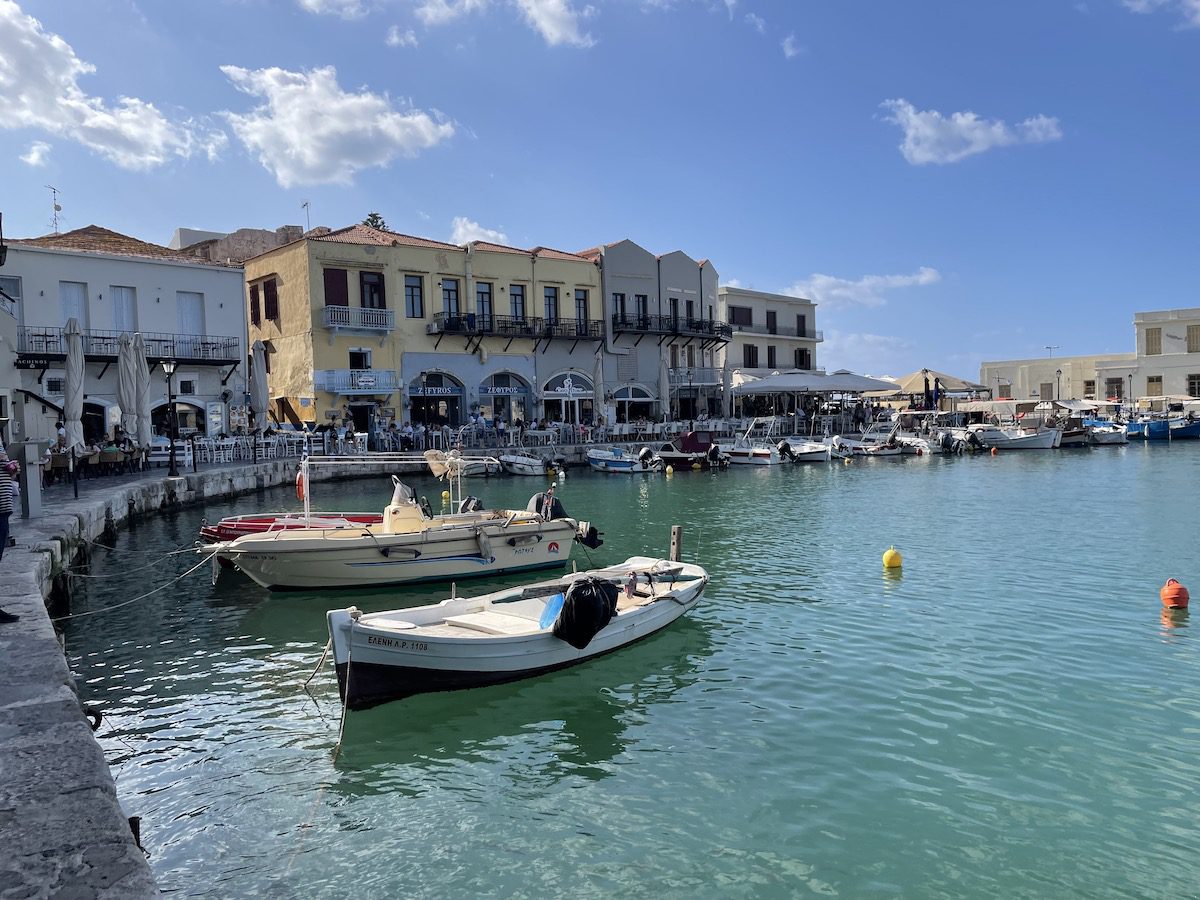
Getting Around Crete
There are some ferry services within Crete, such as the route that operates between Sitia and Heraklion, but the easiest and most convenient way to get around Crete is by car or bus.
Families or groups traveling to Crete might want to consider booking a car, though make sure to book several months in advance! Cars (especially automatic cars) tend to be rented out quickly and prices skyrocket if you do not book early enough. I tend to use AutoEurope when renting a car in Europe to shop for the best prices.
American travelers will need to obtain an International Driver’s Permit (IDP) from a company like AAA before arriving in Crete in order to rent a car. Solo travelers and those traveling on a budget can make use of Crete’s efficient and convenient public bus services on KTEL.
Traveling by car or by bus will give visitors to Crete a chance to experience some of the island’s most beautiful scenic drives. KTEL serves major routes like the Chania to Heraklion via Rethymno route, but it also serves some smaller, touristic routes like those between Chania and some of the beautiful beaches in the west, like Falasarna and Elafonissi.
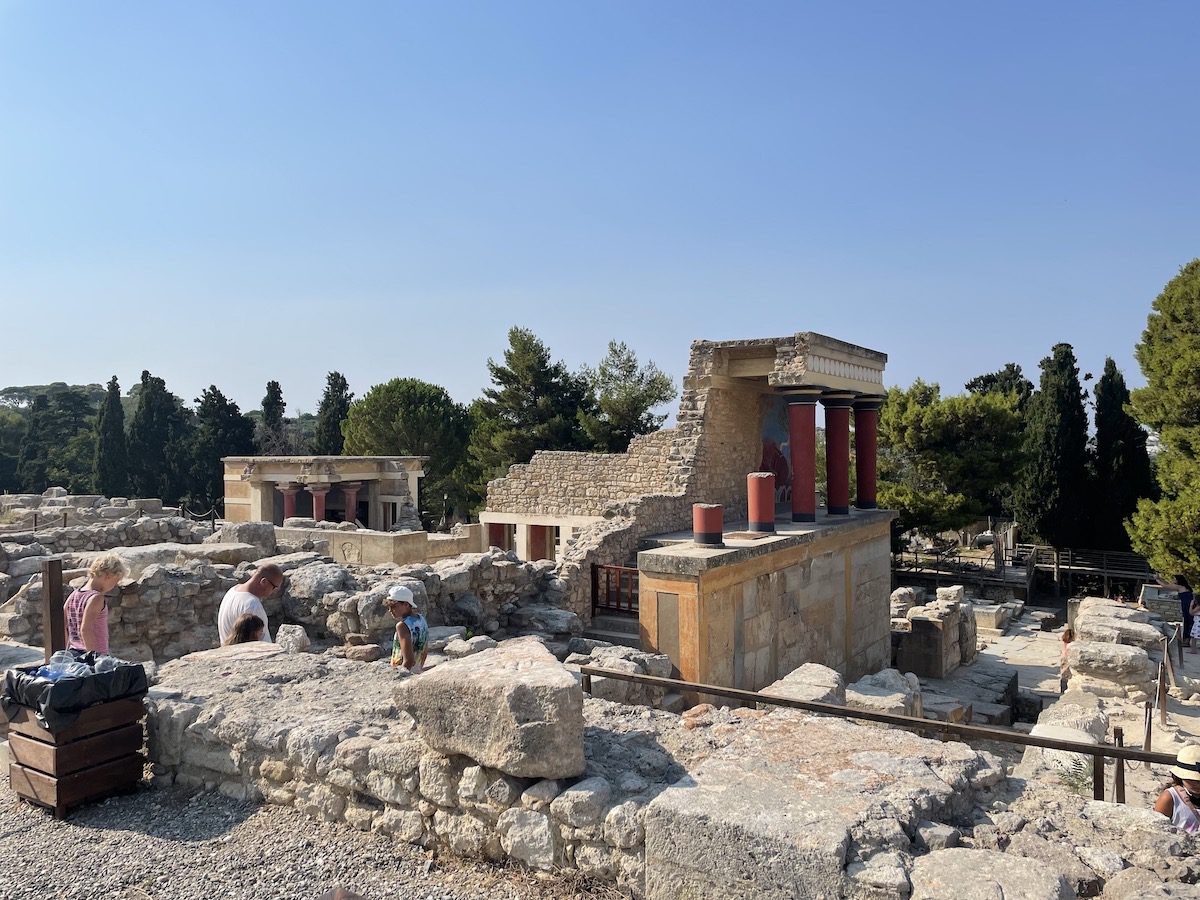
What is the Best Time to Go to Crete?
While many of Greece’s islands have rocky beaches, Crete is well-known for its uniquely sandy beaches. Travelers looking to indulge in the Cretan beach experience should travel in the warmer months of the spring and the summer—late May through early October, approximately.
November through April will be chillier than the summer months and probably not warm enough to sunbathe, but Crete never gets really cold since it is so far south in Europe. Although there will be fewer accommodations available for rent as well as fewer flights and ferries available during the winter months, winter can still be a decent time to go to Crete if you are looking to experience some of its archaeological and historical sites, the local culture, the cuisine, and nature.
Where to Stay on Crete
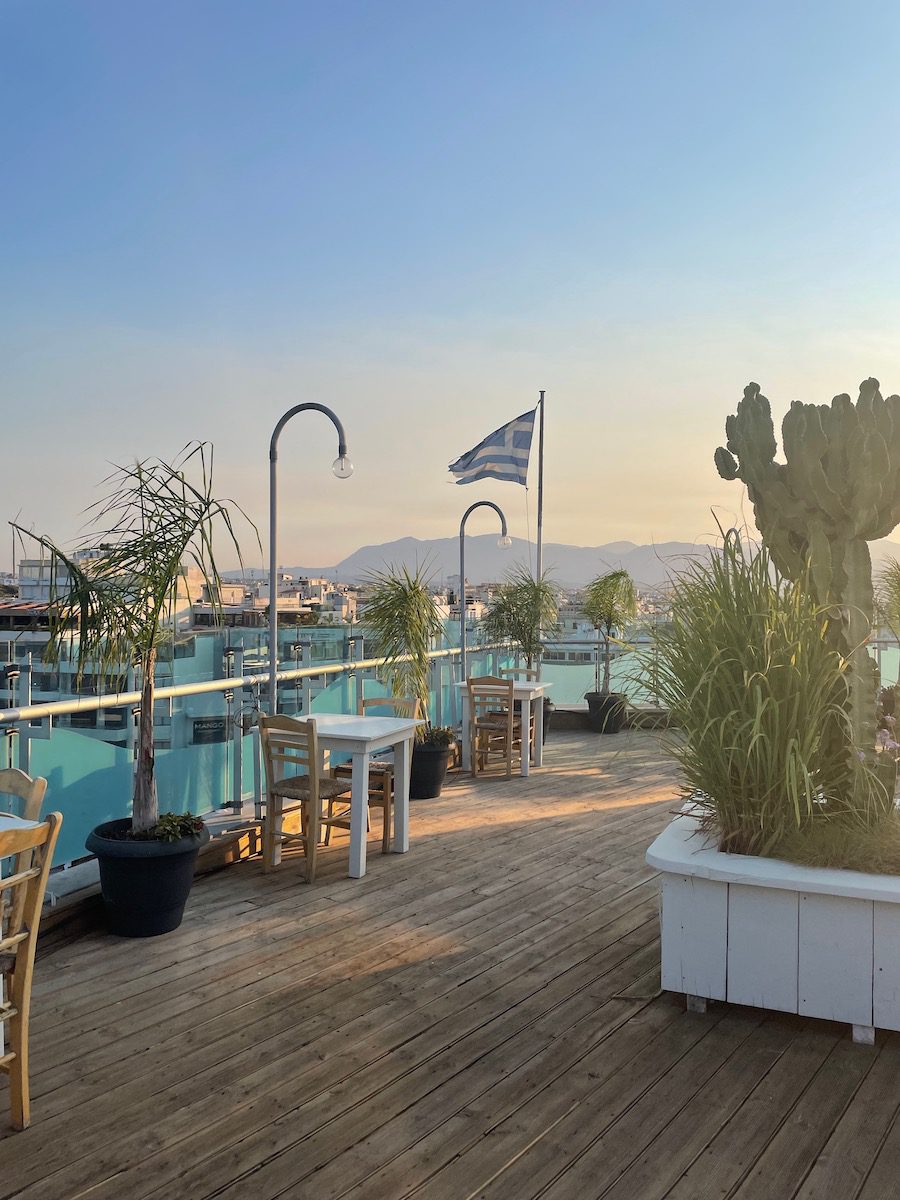
Depending on where you choose to spend time in Crete, you will be able to select from a wide variety of accommodations. Beachy areas like Agios Nikolaos will have lots of resort options geared towards foreign tourists.
Heraklion has a decent selection of hotels and home rentals like villas through sites like Airbnb. I stayed at the Capsis Astoria and was very pleased with the nice rooftop terrace, complete with a decently sized pool, a bar, and nice views of Heraklion, Crete’s white mountains, and the Aegean Sea. The rooms were plain but clean and modern, and the mixed continental and traditional Greek breakfast at the hotel was impressive despite any pandemic-related hygiene protocols that the hotel had to follow during my stay.
Chania and Rethymno have lots of boutique hotels as well as a good selection of home rentals. In Rethymno, consider booking a stay at the Rimondi Boutique Hotel. Located right next to the Rimondi Fountain and the Neratze Mosque, this boutique hotel is a well-regarded option for a relaxing stay in Rethymno. Relax in the hotel’s beautifully furnished rooms and at the luxurious pool and spa.
I stayed in the best Vrbo/Airbnb I have ever rented while I was in Chania. Arietta Stamatakis’ Airbnb/Vrbo is perfect for renting during a stay in Chania for friends, couples, or families. Upon arriving in Crete, she and her husband greeted us with fresh oranges and a melon from their garden, freshly squeezed lemonade, cooked bergamot, homemade kalitsounia (Cretan cheese pies) and spanakopita, homemade tea biscuits and muffins, as well as some tsikoudia that she and her husband had distilled by themselves. Renting her property was truly the best glimpse into Cretans’ amazing sense of hospitality during my visit to Crete.
Smaller cities and towns in Crete that are frequented by fewer tourists like Kissamos will have fewer options than Chania or Rethymno, for example, but there will still be nice hotel and rental options. Book early to get the best deals, though you may occasionally encounter some last-minute booking deals.
Save this to Pinterest
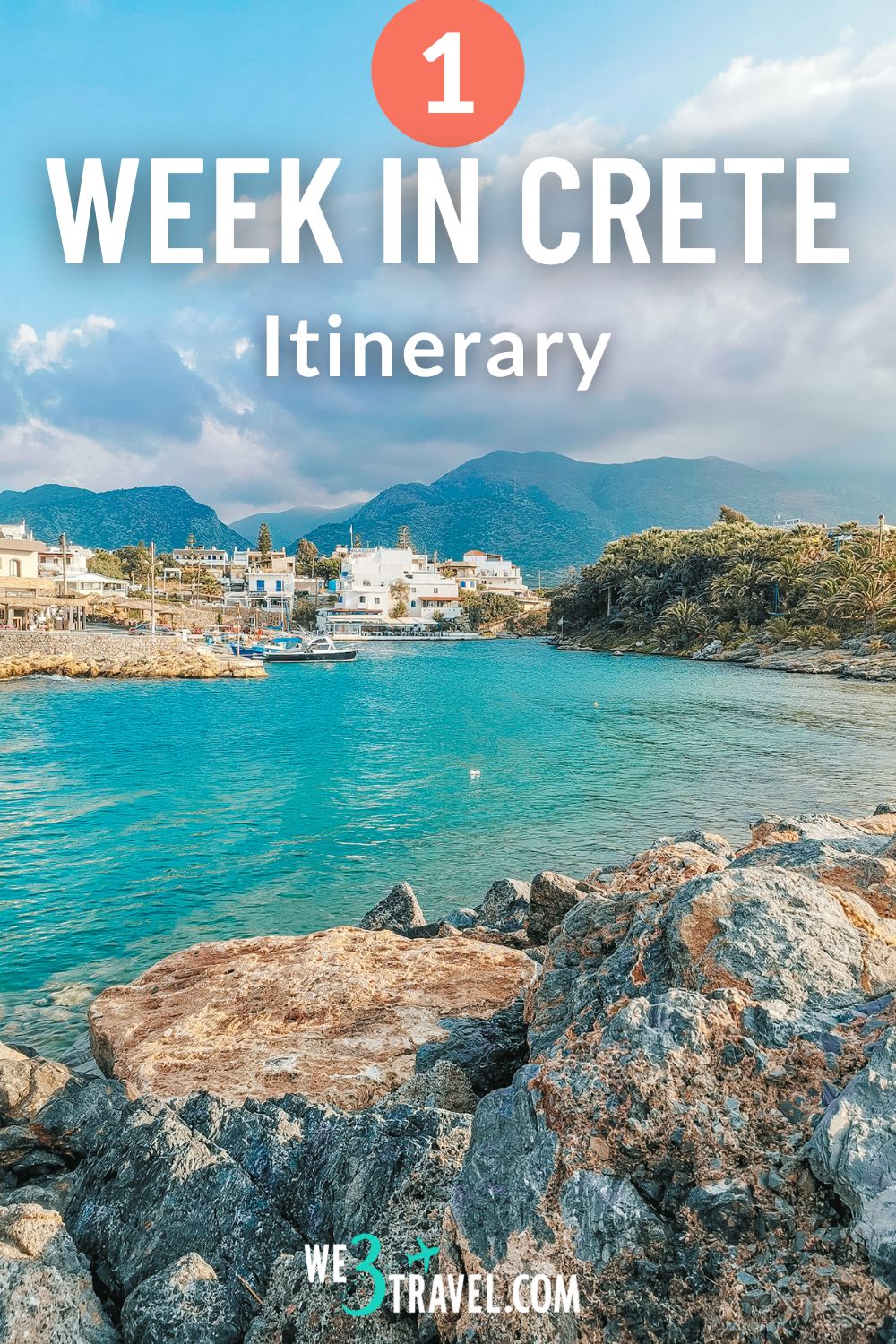
Pinterest image courtesy of Canva. All other images are courtesy of Max Levine unless noted otherwise.
Max Levine has been traveling with his family as long as he can remember. As a teen, he was the one planning vacations for his family and for himself, from researching airfare and railway tickets to crafting itineraries. Max has traveled extensively in both in the US and internationally and has also developed a penchant for writing. As a Georgetown student, Max hopes to continue pursuing opportunities to travel and write both in college and beyond.


